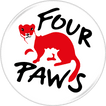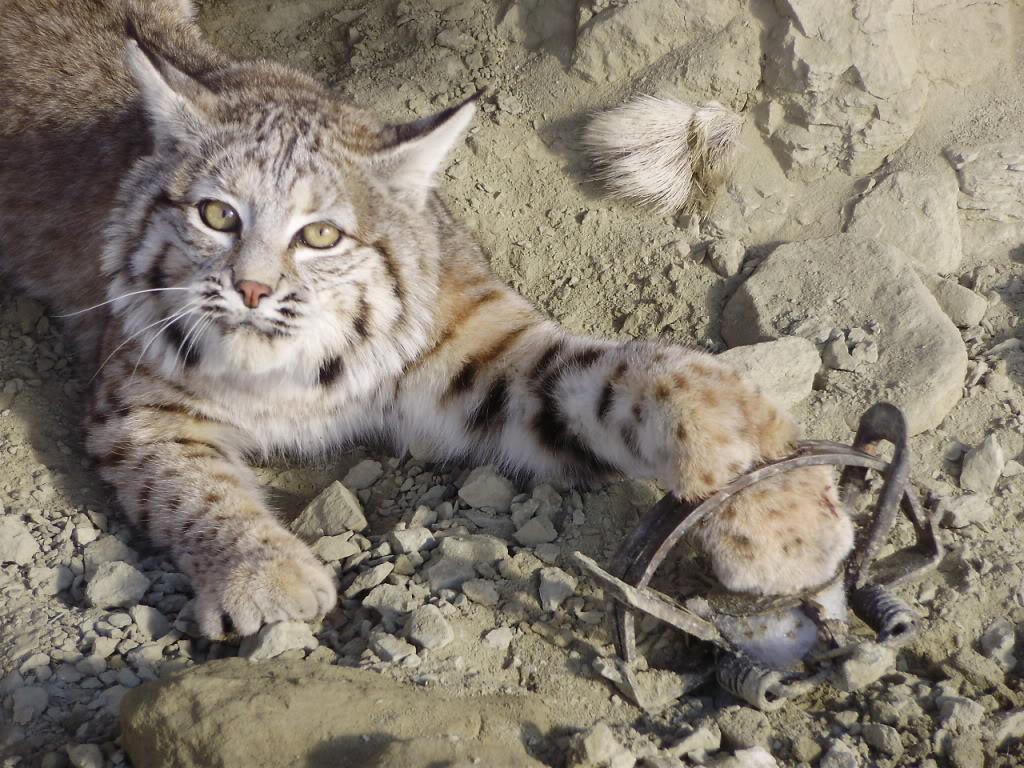
Fur trapping: What's the Issue?
Here's what you need to know about the industry
Each year, millions of wild animalsã₤areã₤caughtã₤and killed for their fur usingã₤wireã₤snaresã₤andã₤body gripping, foothold, and leghold traps.ã₤Animals commonly trapped in the wild include coyotes, bobcats, lynxes, foxes, beavers, raccoons, muskrats, and martens.ã₤Traps injure and kill countless numbers of ãnon-targetedã animals too, which trappers refer to as ãtrash.ã These victims areã₤dogs and cats, mountain lions, deer, birds, and other animalsãincluding threatened and endangered animals.ã₤ã₤
North Americaã₤(namelyã₤theã₤U.S. and Canada)ã₤take the lead, followed by Russia,ã₤for the largest number of wild animals killed for theã₤furã₤trade, with around half of all furã₤peltsã₤ãproducedãã₤in North Americaã₤taken from wild animals.ã₤ã₤In the U.S. trappingã₤takes placeã₤on private and public lands, including protected lands and recreational areas.ã₤ã₤
Although animals trapped in the wild account for roughly 5% of furs used in the global fur trade, the methods used toã₤catch and kill them areã₤horrific and brutal.ã₤Wire nooseã₤snares canã₤crush organs orã₤slowly strangleã₤an animalã₤to death.ã₤Body gripping traps can trap animals underwater until they slowly drown.ã₤Animals caught in leghold traps tryã₤to chew or twist off theirã₤trapped limb in a desperate attempt to free themselves.ã₤
More than 100ã₤countries have banned the use of leghold trapsã₤due to the extreme suffering and pain they cause to animals.ã₤In the U.S., however, leghold traps are still one of the most commonly used traps by commercial and recreational fur trappers.ã₤ã₤
Stuck in traps, animals can die of exhaustion, exposure, predation, starvation, dehydration, shock, drowning, injury or blood loss. Animals that manage to stay alive until being found are often brutally killed through drowning, suffocation, beatings or have their chest crushed by a foot or knee.
Laws and Regulationsã₤
In the U.S.,ã₤the number of wild animals trapped for their fur isã₤poorlyã₤regulated andã₤often managed without proper regard to animal welfare or population numbers. In 2015, over 65,000 wild bobcats were killed and exported outside the U.S.ã this is a dramatic increase from a little over 16,000 killed in 2011.ã₤In Canada, over 800,000 wild animal skins were available for saleã₤in 2015; this included over 100,00 coyotesã₤who wereã₤killed for their increasedã₤use in fur-trimmed coats and other winter wear.ã₤ã₤
Like fur farms, which fall under the jurisdiction of individual state agricultural departments, trapping is largely governed by the states. This resultsã₤in vast discrepanciesã₤in laws and regulations amongã₤the different states. While some like California, Colorado,ã₤Hawaii,ã₤and Washington have humane regulations in place regarding trapping,ã₤a majority ofã₤statesã₤donãt,ã₤and their weak regulations allow trappers toã₤simplyã₤regulate themselves.ã₤Only 13 states require trappers to report how many animals they kill.
Poor regulations and lack ofã₤requiredã₤reporting is also a cause of concern forã₤sensitive species that areã₤alreadyã₤threatened or at risk due toã₤lowã₤population numbers. Depending on their economic value, populationã₤numbers of sensitive species in certain states are often inflated to allow for more trapping, putting animals like bobcats, river otters, wolverines, lynxes, fishers, martens,ã₤kit foxes, and even bears at greater riskã₤of extinction.ã₤
Undercover investigationsã₤have shown that theã₤practice of letting the industry regulate itself, as often seen with farm animals and factory farming, leads to uncontrolledã₤and perpetualã₤cruelty. This includesã₤trappersã₤blatantly ignoringã₤rules, use of illegal trapsã₤or snares, cruel killing methods, disregard of timeframes for checking traps ã leaving many animals in agony for daysã₤ã underreporting the numberã₤of animals and species killed,ã₤trapping animals during non-hunting season, andã₤failing toã₤reportã₤the number of non-target animals killed. All of this makesã₤theã₤likelihood ofã₤the total number ofã₤animals reported, both targeted and non-targeted,ã₤likely far below the actual number of animals killed.ã₤ã₤
Fur Free Fashionã₤ã₤
The safest and most compassionate choiceã₤a consumer can makeã₤is to avoid fur completely andã₤toã₤support fashion brands that have taken a stand to no longer support the cruel industry. Brands that support not using fur includeã₤Gucci, Hugo Boss, Armani, and the VFã₤Corporation, which ownsã₤nearly 30 fashion brands such as The North Face, Vans, Timberland, Lee, and Dickies.ã₤Consumers also support these changes. For instance, inã₤a 2017 survey of Massachusetts residents, 64% supported a state-wide ban on the sale of clothing that contained animal fur.ã₤ã₤
It's time to #


